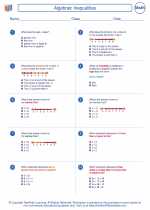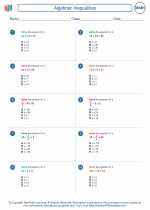What is a Scatter Plot?
A scatter plot is a type of mathematical diagram using Cartesian coordinates to display values for typically two variables for a set of data. The data is displayed as a collection of points, each having the value of one variable determining the position on the horizontal axis and the value of the other variable determining the position on the vertical axis.
How to Create a Scatter Plot?
To create a scatter plot, you first need to have a set of paired data points. Each data point consists of a pair of values, one for the x-axis and one for the y-axis. Once you have the data, you can plot each pair of values as a single point on the coordinate plane. The x-value determines the horizontal position and the y-value determines the vertical position of the point. After plotting all the points, you can analyze the pattern and relationship between the variables.
Key Concepts
- Variables: In a scatter plot, the two sets of data are often referred to as the independent variable (x-axis) and the dependent variable (y-axis).
- Correlation: A scatter plot can show the relationship between the two variables. A positive correlation indicates that as one variable increases, the other variable also tends to increase. A negative correlation indicates that as one variable increases, the other tends to decrease. No correlation means that the variables do not have a consistent relationship.
- Line of Best Fit: This is a straight line that best represents the data on a scatter plot. It helps to visually see the overall pattern or trend in the data.
Study Guide
- Understand the purpose of a scatter plot and when it is used.
- Learn how to create a scatter plot from a given set of data.
- Identify the independent and dependent variables in a given scenario.
- Interpret the scatter plot by analyzing the direction and strength of the correlation.
- Understand how to draw a line of best fit and its significance in representing the data.
- Practice creating and interpreting scatter plots using different sets of data.
◂Math Worksheets and Study Guides Seventh Grade. Algebraic Inequalities

 Worksheet/Answer key
Worksheet/Answer key
 Worksheet/Answer key
Worksheet/Answer key
 Worksheet/Answer key
Worksheet/Answer key
